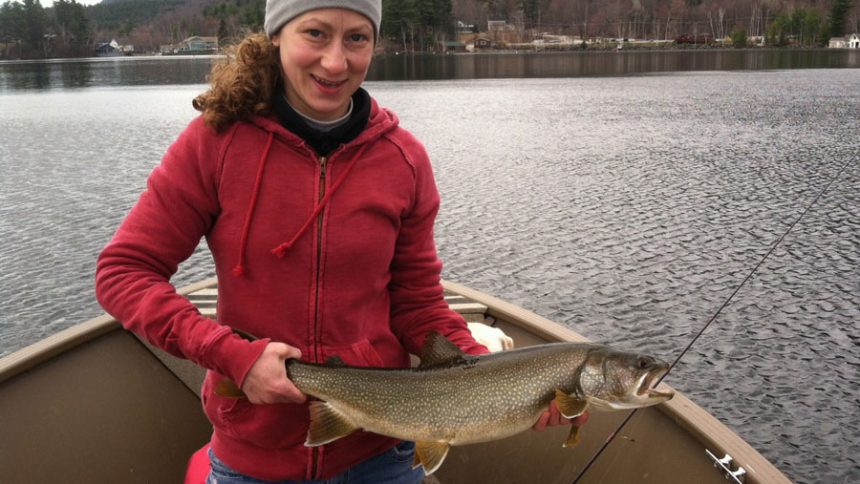This article originally appeared in On the Water on August 4, 2020.
By Andy Schafermeyer
On any given day, I might find myself with a break in the busy schedule of life, work, and family. I don’t struggle with ways to occupy my free time and almost always resort to my lifelong passion of fishing. I might find myself waist-deep in a river fly-fishing for trout. I might be standing on the ice in winter or on a muddy shoreline in spring, but I’m always looking for opportunities to catch fish. My most common approach is to launch my boat and spend time on whatever waterbody offers the best fishing conditions.
In my world, boat styles, fishing gear, and rods, reels, and tackle are often over-analyzed. In contrast, many anglers who use boating and fishing access sites give little to no thought to their interworking’s, myself included. Although I have used these state fish and wildlife agency access areas a thousand times, I never thought about the logistics that go into providing anglers and boaters with these opportunities. I simply launch my boat, park my truck and trailer in a designated area, take advantage of other facilities such as picnic tables, garbage cans, and restrooms, and go fishing. For sporting types who pay such attention to detail, this seems strange to me and I decided recently to gain a better understanding. What I discovered was a well-functioning partnership that utilizes specialized funding sources to provide opportunities to anglers and boaters throughout the country. In short, I discovered a success story.
boat ramp
At first glance, I realized I owe a huge thank-you to my state fish and wildlife agency for providing this access, but a complete explanation didn’t end there. In reality, fishing tackle manufacturers, companies that make boats and boat components, and the US Fish and Wildlife Service are to thank as well. Through the Sport Fish Restoration Act of 1950 (aka the Dingell-Johnson Act), a manufacturers’ excise tax on fishing equipment and a portion of the gasoline tax attributable to motorboats are collected each year and passed on to state fish and wildlife agencies by the US Fish and Wildlife Service’s Wildlife and Sport Fish Restoration Program.
Without realizing it, all of the fishing gear and motorboat fuel I have bought over my lifetime has helped fund this fantastic conservation partnership through the manufacturer’s excise taxes. What’s more, my fishing license fees are used by the state agencies as their required match to receive the Sport Fish Restoration funds. This is a classic example of a user-pay program that benefits the larger population by enhancing access and opportunities. This was an enlightening observation and I investigated further.
Easy to see is the land acquisition, easements, and protection of these access sites. Also clear is the maintenance required to keep them operational. Over 6,400 boat access sites are operated and maintained across the United States each year using the Sport Fish Restoration funds and they have also helped construct over 1,100 new fishing and boating access sites in the past five years. With this crucial first step in-place, what happens when the boat is launched and I start to cast? The partnership and program are far from over and the benefits keep rolling in.
For those fisheries that are maintained with stocked fish, the excise taxes provide funds to raise them. Across the nation, these funds help operate and maintain over 300 state fish hatcheries, which produce over 1.3 billion fish of 70 species each year. This makes for some very productive fishing and many happy anglers, as well as the successful restoration of some fish species.
Just as many waterbodies do not require the supplemental stocking of fish, as opportunities exist for naturally occurring species. However, these waterbodies still require research, surveys and management to provide healthy fish populations, and the excise taxes also help fund these state agency activities.
For many years, I appreciated my fishing experiences but rarely asked myself the question of their origin and propagation. I had no idea that such a unique conservation partnership existed. State fish and wildlife agencies, manufacturers, and the US Fish and Wildlife Service’s Wildlife and Sport Fish Restoration Program work together to connect people with the natural world. By creating and maintaining access areas, the public has an opportunity to visit and use some truly beautiful locations. By maintaining healthy fisheries, recreational angling will thrive and expand.
People all over the country are provided these opportunities, yet few know how and why. I’m glad that I investigated and feel very proud to play a part in such an effective program. I feel confident that I will be fishing and boating for many years and that my children and their children will have the same opportunities thanks to this unique partnership.

